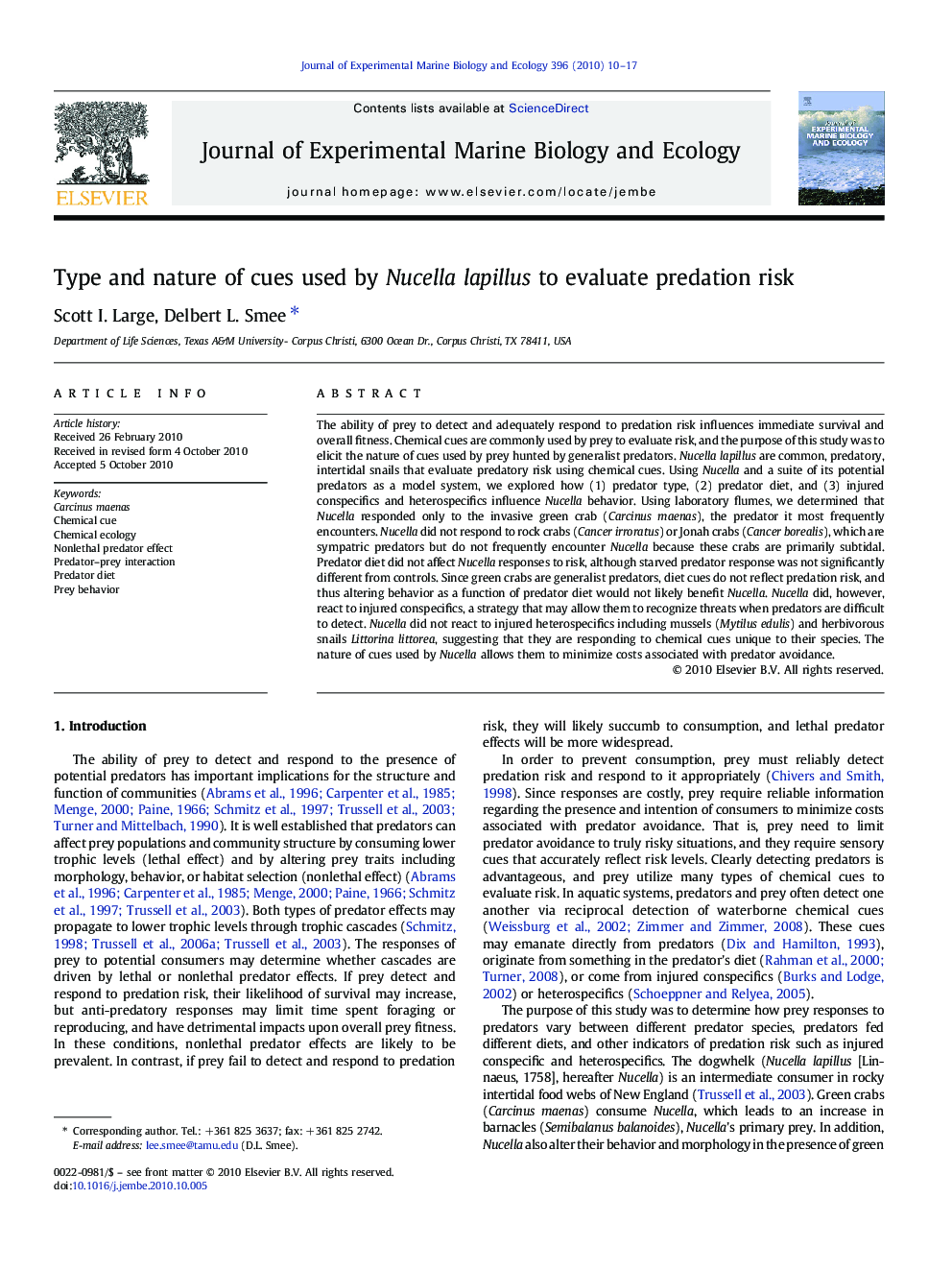| کد مقاله | کد نشریه | سال انتشار | مقاله انگلیسی | نسخه تمام متن |
|---|---|---|---|---|
| 4396481 | 1305826 | 2010 | 8 صفحه PDF | دانلود رایگان |

The ability of prey to detect and adequately respond to predation risk influences immediate survival and overall fitness. Chemical cues are commonly used by prey to evaluate risk, and the purpose of this study was to elicit the nature of cues used by prey hunted by generalist predators. Nucella lapillus are common, predatory, intertidal snails that evaluate predatory risk using chemical cues. Using Nucella and a suite of its potential predators as a model system, we explored how (1) predator type, (2) predator diet, and (3) injured conspecifics and heterospecifics influence Nucella behavior. Using laboratory flumes, we determined that Nucella responded only to the invasive green crab (Carcinus maenas), the predator it most frequently encounters. Nucella did not respond to rock crabs (Cancer irroratus) or Jonah crabs (Cancer borealis), which are sympatric predators but do not frequently encounter Nucella because these crabs are primarily subtidal. Predator diet did not affect Nucella responses to risk, although starved predator response was not significantly different from controls. Since green crabs are generalist predators, diet cues do not reflect predation risk, and thus altering behavior as a function of predator diet would not likely benefit Nucella. Nucella did, however, react to injured conspecifics, a strategy that may allow them to recognize threats when predators are difficult to detect. Nucella did not react to injured heterospecifics including mussels (Mytilus edulis) and herbivorous snails Littorina littorea, suggesting that they are responding to chemical cues unique to their species. The nature of cues used by Nucella allows them to minimize costs associated with predator avoidance.
Research Highlights
► Nucella lapillus, a common intermediate consumer in rocky intertidal communities, avoid predators by decreasing foraging activity and seeking refuge habitats
► Chemical cues emanating from green crab (Carcinus maenas) predators and injured conspecifics modulate Nucella predator avoidance behavior
► Nucella do not react to sympatric crab predators (Cancer sp.) that remain subtidal and pose little threat to them
► Nucella reactions to green crabs are not affected by the crab's diet
► Although Nucella react to injured conspecifics, they did not respond to injured heterospecifics, suggesting that cues mediating responses are unique to their species
Journal: Journal of Experimental Marine Biology and Ecology - Volume 396, Issue 1, 15 December 2010, Pages 10–17